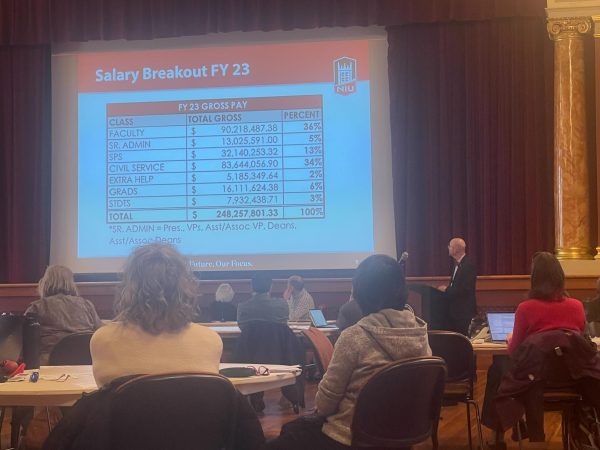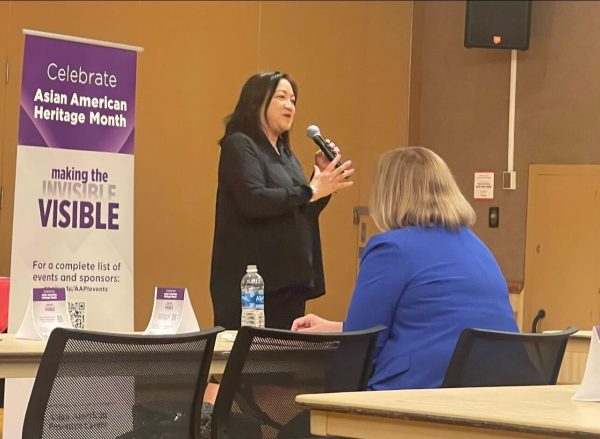Desserts count as larger servings at dining halls
October 23, 2008
Students looking to manage their weight may consider portion size when trying to make healthy choices.
Several variables can affect weight, including calories in beverages, less exercise, increased stress and social eating all contribute to weight gain, said Josephine Umoren, Ph.D., associate professor and coordinator of Nutrition Dietetics & Hospitality Administration. The availability and freedom to eat anything is the biggest culprit of the “freshman 15,” Umoren said.
Portion sizes in the dining halls over time have increased, mirroring the restaurant industry, said Ralph Chaplin, director of Residential Dining.
How are dining hall portions determined?
“We try to estimate the quantity that our customer is looking for,” Chaplin said.
This estimation is not based on written records, but rather on verbal feedback from individuals working with food items, observing the students’ buying habits.
Students reacted to the portions offered.
“The cake sizes can be ridiculously big,” said Lydia Lindberg, freshman English major.
Dawn Bisterfeldt, a senior dietetics major, agreed.
“Any dessert that you get is at least two or three servings.”
Umoren said although there are larger portions for a la carte, Housing and Dining does post nutritional information.
“Given that information, you should be able to choose,” Umoren said.
A typical college student should consume anywhere between 1,800-2,900 calories per day, depending on gender and level of physical activity, Umoren said.
“In general, fat should not be more than 30 percent of your total caloric intake per day, roughly 65 grams on a 2,000 Kcal diet,” Umoren said.
There are people who can help students with managing their eating habits.
Lucy Robinson, director of Dietetic Internships, explained that any student can go to the Rec Center and ask for a dietetic intern to help you choose healthy meals in relation to what is offered in the dorms.
“Students should learn how to use the information out there,” Umoren said. “Really, it’s all on the student.”













